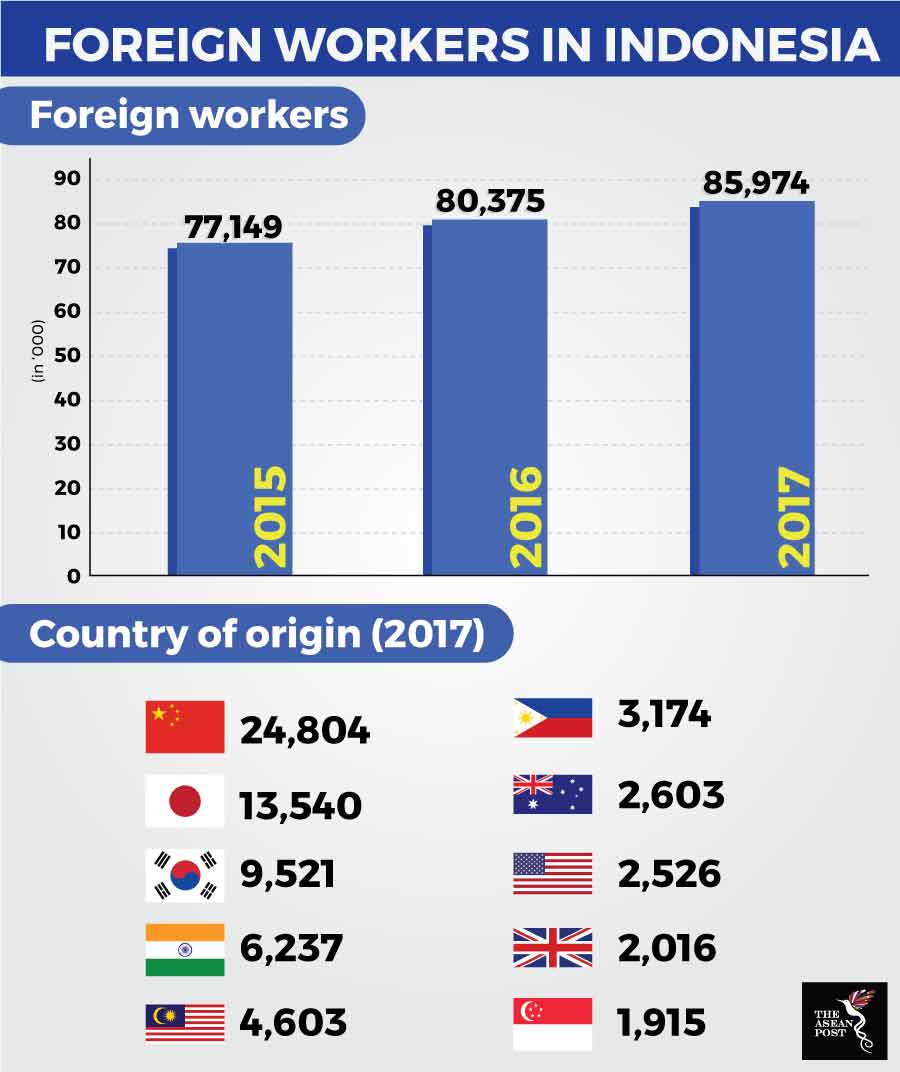Indonesia is hoping to attract 3.5 million Chinese tourists to visit various tourist destinations in the country this year. Tourism Minister Arief Yahya expressed optimism that the target of 3.5 million Chinese tourist arrivals for 2019 would be achieved after the ministry designated Singapore as a hub for the Indonesian tourism market.
"Our weakness is that we do not have many direct flights. Singapore now has 11 direct flight routes to Indonesia, and we will benefit from them," he said.
Previously, Indonesia had set a target of three million Chinese tourist arrivals in the country for 2018. However, the Tourism Ministry revised downward the target to 2.6 million following a series of earthquakes on the island of Lombok and a disastrous earthquake and subsequent tsunami in the province of Central Sulawesi.
More than 1.9 million Chinese tourists visited Indonesia during the January-October 2018 period.
Whether Indonesia is able to meet its target for 2019 will depend on a host of factors. Regardless, it would be wise for the Indonesian government to take into consideration the sentiment on the ground.
It is more than likely that Indonesia’s ambition to bring in 3.5 million tourists from China may not bode so well for its locals. This is an especially pertinent possibility for the government considering the fact that the election is just around the corner and Indonesian President Joko “Jokowi” Widodo intends to get re-elected.
Chinese taking jobs
Numerous reports, both foreign and local, have told of a rising anti-Chinese sentiment in Indonesia as “conspiracy theories” fanned by political sentiment have risen regarding an influx of illegal Chinese foreign workers. Since February, the Confederation of Indonesian Workers’ Union (KSPI) has been compiling unofficial data on Chinese workers suspected of not having proper documentation and it has asked the manpower ministry to take action.
In late 2017, around 150 college students on Sulawesi island, where several Chinese smelters are being built, stopped vehicles they suspected of carrying illegal Chinese workers and brought them to the authorities. One of the students, who only wished to be identified as Erik, told the international media that the group planned more raids.
Maruli Hasoloan, a manpower ministry official, acknowledged some labour friction and vigilantism over the past few months. While the ministry was coordinating with other authorities to prevent any abuse of visa-free entry, it does not condone a vigilante crackdown on foreign workers, he said.
Official statistics from the ministry have not allayed fears either. Numbers from 2017 (the latest statistics available) showed that China led in the number of foreign workers in Indonesia with a total of 24,804 workers. A distant second was Japan at 13,540 workers.
Meanwhile, the total number of foreign workers in the country continues to rise. In 2015, the number stood at 77,149; it was 80,375 in 2016; and in 2017 the figure had risen to 85,974.

From tourist to foreign worker
While the government of Indonesia may assure its people that the people it intends to bring in are tourists, this may not be very effective at allaying fears either.
One only needs to look at developments in another ASEAN member country to begin worrying about the possibility of these tourists becoming workers.
On 28 November 2018, reports surfaced that the Senate labour committee in the Philippines was looking into the proliferation of presumed illegal workers from China. According to reports, the numbers had risen around Metro Manila to a degree that did not match official employment numbers from the Department of Labour and Employment (DOLE).
The Senate panel learned that the number of Chinese from the mainland entering the Philippines as tourists before obtaining short-term special permits to work in online gambling operations numbered in the tens of thousands. At a hearing of the Senate labour committee, Senator Joel Villanueva expressed alarm and indignation after immigration and labour authorities admitted that more than 119,000 “tourists”, were able to skirt labour regulations to gain temporary employment in the country.
Senator Franklin Drilon, a former labour secretary, put the number even higher and said there could be as many as 400,000 Chinese working for gaming operators and other outsourcing companies that mostly service clients in China.
Jokowi will have to think very critically about his next move. His appointment of conservative and prominent cleric Ma’ruf Amin shows that he realises his countrymen are increasingly leaning towards the conservative right. However, he must also realise that more often than not, the conservative right is concerned about more than just religion and as seen in other parts of the world including the United States (US); one of those concerns is an abundance of foreign labour.
This article was first published by The ASEAN Post on 19 December 2018 and has been updated to reflect the latest data.
Related articles:
